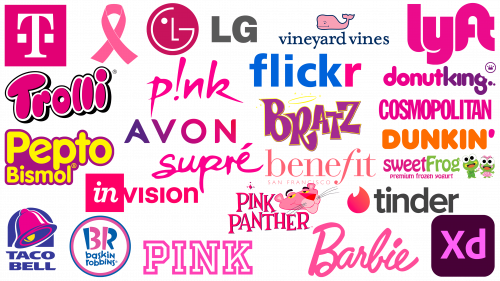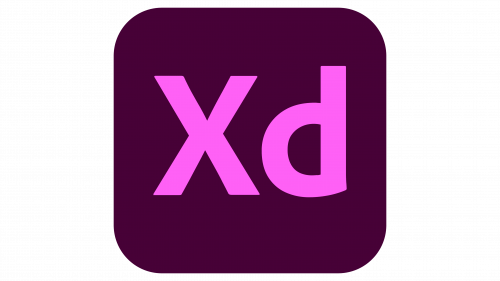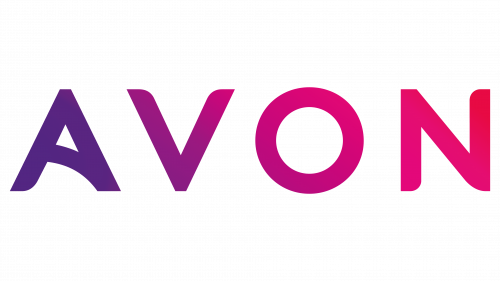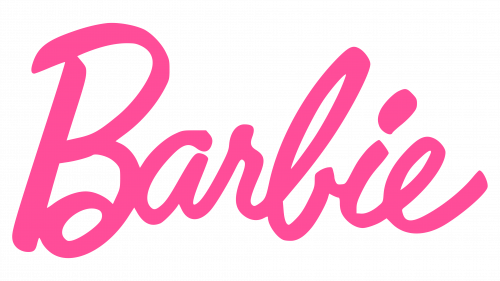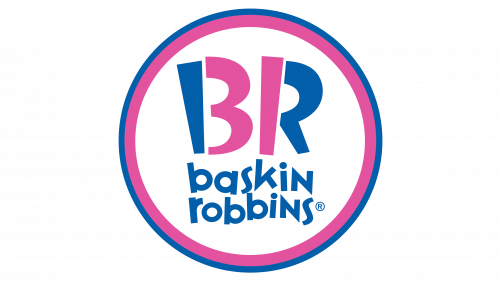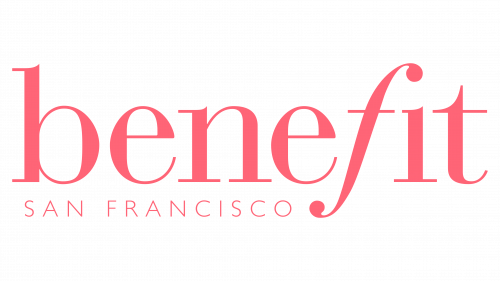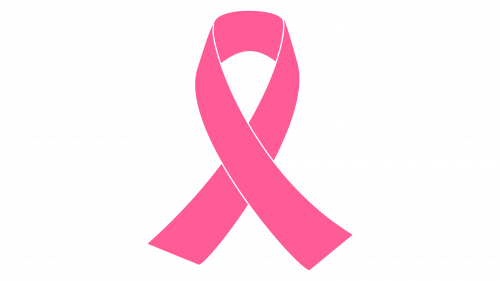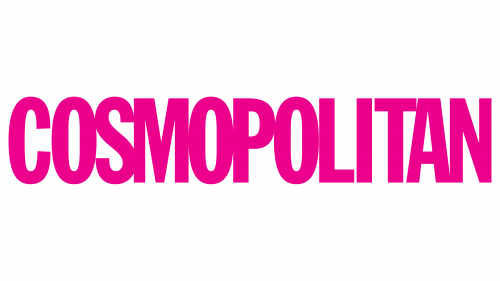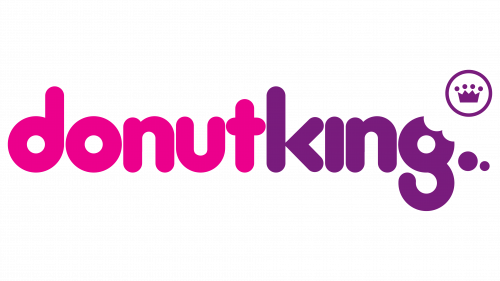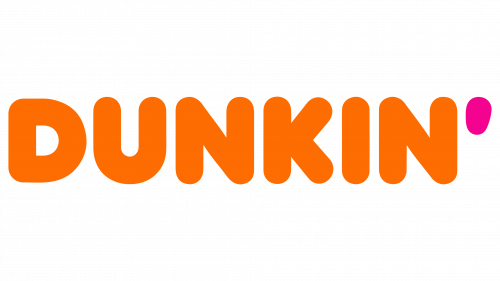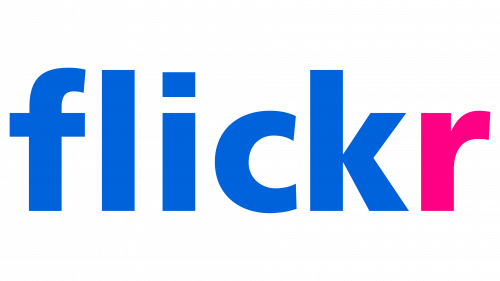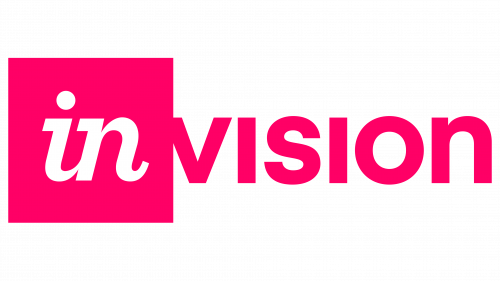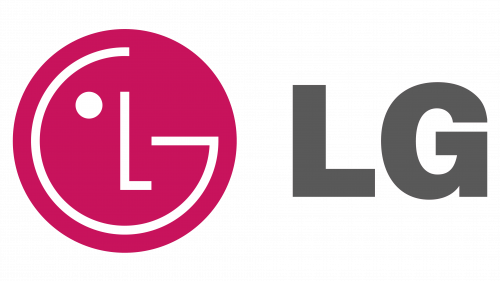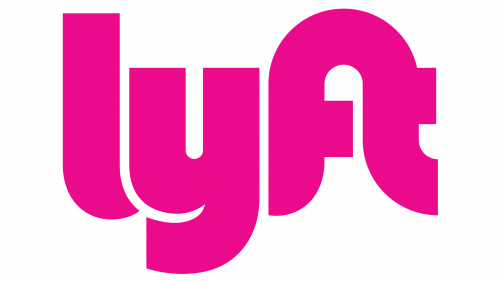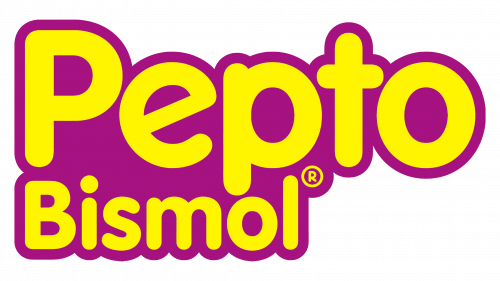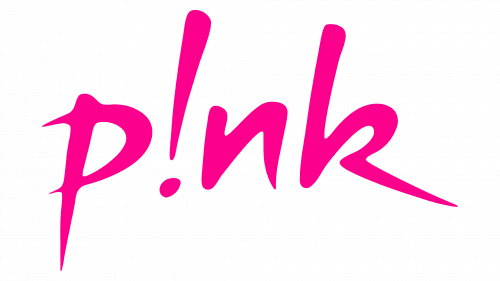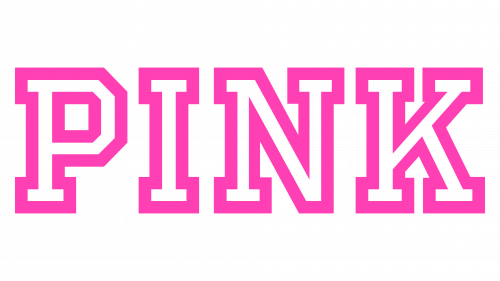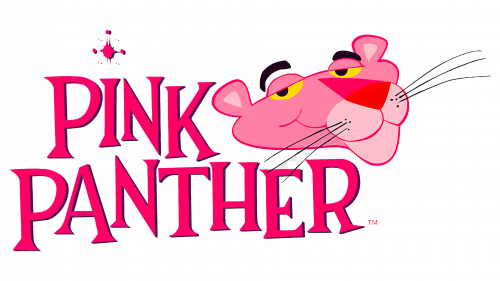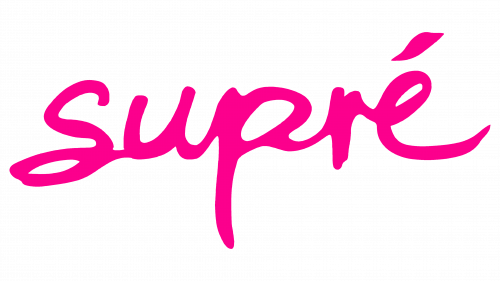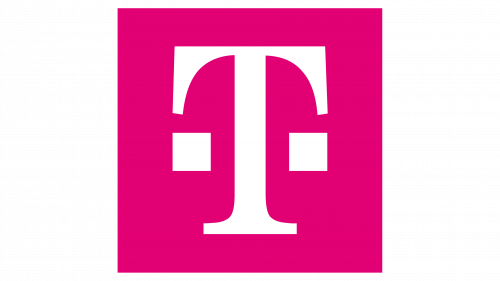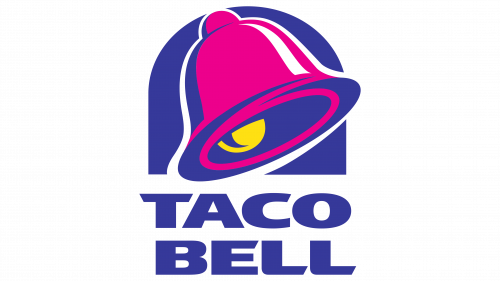Pink always stands out in a brand’s color palette, which can sometimes be very diverse. While hues such as red or blue may dominate branding, pink has carved a niche for itself, symbolizing emotions and qualities ranging from warmth and compassion to vitality and courage.
Using pink in branding is a strategic move. It gives the brand the opportunity to radiate compassion, warmth, and accessibility. This color evokes feelings of caring, tenderness, and closeness. So, it’s no surprise that pink logos are often found in industries related to self-care, health, and emotions.
Take industries such as cosmetics and fashion. Here, pink is not just a color; it’s a statement. It appeals to an audience looking for products that promote self-expression, individuality, and self-care. Similarly, in culinary, especially in areas such as bakeries and dessert parlors, pink often hints at sweetness, delicacy, and indulgence.
The spectrum of pink is very broad. On the one hand, muted and pastel shades of pink evoke feelings of serenity, tranquility, and nostalgia. Conversely, the bolder and brighter shades of pink reflect attributes of enthusiasm, energy, and courage. Like red, its more fiery counterpart, pink can be energetic and full of life.
The world of branding becomes richer with the inclusion of pink. Whether a brand is looking to express its caring side or exude energy and confidence, pink is a versatile foundation; its widespread use across industries underscores its adaptability and enduring appeal.
Why do companies use pink in their logos?
The color pink is versatile and can convey a multitude of feelings and moods, often going beyond its original stereotypes.
Associations with pink as a “feminine” hue are deeply rooted in societal traditions. These traditions date back to cultural practices assigning specific colors to the sexes. As society evolves, boundaries blur, leading to a greater acceptance and use of pink in a variety of areas, regardless of gender.
On the one hand, pale and pastel pink colors evoke feelings of serenity, tranquility, and innocence. They conjure up images of cherry blossoms, serene sunsets, and delicate rose petals. This tranquility makes them a favorite in rooms for rest and relaxation.
Brighter shades of pink, such as fuchsia or purple, represent energy, passion, and confidence. These bolder variations of pink are reminiscent of flamingos, bright summer flowers, or the buzz of a lively carnival. These variations of pink are eye-catching and are often used in areas where brands want to convey enthusiasm, boldness, or rebelliousness.
Complementing pink with different colors can further enhance or change its impact. Combining it with muted tones can enhance its calming nature while juxtaposing it with brighter hues can increase its vibrancy. The narrative of the color pink is vast and varied. When used correctly, it has the potential to convey a multitude of messages, breaking barriers and transcending traditional norms.
What companies have a pink logo?
Pink has always stood out as an intriguing shade, especially when used in branding and logos. This hue has the ability to evoke a multitude of emotions, from gentleness to liveliness.
The versatility of the color pink is evident in its various shades. While lighter shades such as blush or rose to convey innocence and purity, deeper shades such as magenta or fuchsia exude confidence and energy. This spectrum allows brands to choose exactly the emotion they want to convey, whether it’s quiet confidence or fervent enthusiasm.
The resonance of pink is not limited to emotions alone. It is also capable of evoking memories and experiences. For many, this hue conjures up images of early spring blooming, cotton candy at the fair, or the soft hues of a twilight sky.
Brands that use pink in their logos are often memorable to their audience. Brands that use pink in their logos are often remembered by their audience. This is due to the visual appeal of the color and its ability to connect on a deeper emotional level. Whether it’s a beauty brand looking to convey softness and appeal, a technology company seeking to be fresh and modern, or a non-profit organization showing compassion and caring, pink represents a wealth of potential.
When pink is used thoughtfully in branding, it goes beyond mere aesthetics. It shapes a narrative, establishes a connection, and leaves an indelible mark on the psyche of the observer.
Adobe XD
Adobe XD, a company known for its innovative software solutions, uses a pinkish-purple hue in its branding, harmonizing with a deep purple background. This vibrant color choice not only adds to the aesthetic appeal but also reflects the essence of innovation, design, and boundless creativity that the software endows its users with.
Given that Adobe XD specializes in creating vector images, this color scheme effectively reflects a combination of precision and artistic freedom. The pink-purple hue not only exudes creativity but also matches the modern designer’s penchant for a fresh, dynamic aesthetic.
There is a balance in the selection of Adobe XD’s unique pink hue. It does not lean toward the traditional feminine connotations that are often associated with the color pink. On the contrary, it is neutral, which provides a broader appeal to a variety of users. This balanced approach to color selection further underscores the company’s commitment to meeting the needs of all designers, regardless of their gender or worldview. As a result, Adobe XD emerges as an avant-garde tool and an inclusive platform for digital creators.
Avon
Avon, a global cosmetics manufacturer, has consistently positioned itself as a women-centered company. Over the years, the inclusion of pink hues in the branding has reinforced this positioning, as pink is traditionally associated with feminine qualities.
Avon uses a palette that goes beyond just the color pink. It also includes elements of reddish-orange and shades of purple. At the same time, the pink shades remain bright and easily noticeable. This color choice ties the brand to its core demographic and creates an aura of warmth and caring. The color palette, with pink at the forefront, reinforces Avon’s image as a brand that deeply considers the feelings and preferences of its customers and offers products that nurture and celebrate the feminine essence.
Barbie
The Barbie brand, synonymous with the vibrant shade of pink, has gained significant global recognition by using this hue to resonate with its target audience, perceived as predominantly female. Created at a time when pink hues were primarily associated with femininity, the brand shrewdly adopted the color, allowing it to find common ground with people seeking self-expression.
Modern versions of the Barbie emblem have moved to a richer and more saturated shade of pink, different from the previous pale versions. This change keeps the logo fresh and modern, which continues to mesmerize and captivate audiences, making a lasting impression on many.
Baskin Robbins
Baskin Robbins, a well-known fast food company, strategically uses a duo of blue and pink colors in its logo. This color palette serves two purposes: not only does it provide broad appeal to a diverse population, regardless of gender or background, but it also subtly references the brand’s history and offerings. Pink highlights the famous original lineup of 31 delicious ice cream flavors.
The design of the Baskin Robbins logo radiates an air of accessibility and liveliness. This design is appropriate for a company targeting an eclectic range of consumers – from families enjoying a weekend treat to teenagers looking to indulge in dessert.
Benefit
Benefit Cosmetics, while it doesn’t have a permanent pink logo, often uses this hue in elements of its brand. This color is not only on the logo but also on product packaging and displays in retail stores.
Benefit’s attachment to the color pink is strategic. As a cosmetics company, Benefit targets a diverse clientele, and pink has universal appeal in the beauty industry, symbolizing femininity, vibrancy, and attractiveness. Pink is a visual cue for Benefit’s most famous product, Benetint, known for its blush finish.
The intentional use of different shades of pink highlights the brand’s versatility, appealing to both bold and subtle beauty connoisseurs. In this way, Benefit keeps its look fresh and recognizable in the ever-evolving beauty industry.
Bratz
Bratz, similar to Barbie, has established itself as a well-known children’s toy brand aimed primarily at a female audience. Over time, Bratz has released many variations of its emblem in different shades. The most iconic for the brand remains the combination of pink and gold colors.
The shade of pink used in the Bratz emblem is a richer shade of pink that is typical of many other brands. The unique typography used for the brand name further distinguishes Bratz as a brand with sass and originality.
Breast Cancer Research
The Breast Cancer Research Foundation’s adoption of the color pink is a prime example of this potential. By associating itself with this color, the foundation addresses universal themes of caring, unity, and support.
While pink is traditionally associated with femininity, in the context of the foundation’s mission, it transcends that association. The pink ribbon, which has become a symbol of breast cancer awareness, visually represents the collective effort to fight the disease. It symbolizes hope for a cure, the memory of those who have lost their lives, and the solidarity of those fighting the disease.
The symbolic pink ribbon serves as a strong reminder of the foundation’s ongoing commitment. Its prominence in the branding raises awareness and galvanizes support from a wide audience. The choice of color demonstrates the profound impact of a simple hue in uniting people around a meaningful purpose, highlighting the importance of unity in the face of adversity.
Cosmopolitan
Cosmopolitan takes its rightful place in the pantheon of world-renowned publications, carving out a niche as a specialty magazine dedicated to a wide range of women’s topics, from the intricacies of fashion and lifestyle to the vibrant world of cosmetics.
To resonate more deeply with its core female audience, the magazine has thoughtfully chosen a vibrant shade of hot pink. This shade not only emphasizes feminine appeal but also reinforces a bold statement. This bold color choice speaks to the magazine’s intent: to be a voice for women who embody their bold and confident nature.
Donut King
Founded in 1981 and now under the Retail Food Group umbrella, Donut King is a well-recognized brand from Sydney. The logo of this brand strategically uses the color pink. This choice is no accident; it is a deliberate decision meant to represent the vibrant colors, delicious flavors, and inherent sweetness of their offerings.
The combination of pink with shades of purple in the Donut King logo is not just a design choice but a strategic move to appeal to a younger audience, enticing them with their youthful energy. Complementing the color palette is the font choice. The lowercase font with capital letters creates a sense of modernity, accessibility, and youthfulness, which further enhances the brand’s appeal to a younger audience. Together, these design elements emphasize Donut King’s commitment to freshness, fun, and flavor.
Dunkin Donuts
Dunkin Donuts, a widely recognized brand in the food and beverage sector, showcases a vibrant interplay of hues in its logo. Recently, there has been a noticeable change in the visual representation of the brand. The previously prominent pink element that traditionally emphasized Donuts has been discreetly de-emphasized. We mostly see the concise “Dunkin” name emphasized with a playful pink apostrophe to denote its culmination.
The legacy of Dunkin Donuts’ branding has left an indelible mark on the minds of consumers. Most still associate the brand with its signature duo of pink and orange. These vibrant colors, reminiscent of the first rays of dawn, carry enthusiasm, zest, and dynamism – attributes perfectly aligned with the ethos of a lively food and coffee establishment.
Flickr
Although blue is the dominant shade in the Flickr logo, you can’t help but notice the flecks of pink that play a key role in the brand’s identity. Its vibrant presence allows Flickr to stand out and assert its unique branding.
Flickr chooses a minimalistic approach, replacing its entire word mark with a pair of dots. In this representation, these dots, rendered in blue and bright pink, emphasize the importance of the pink hue, further reinforcing its importance and relevance in the brand’s visual uniqueness.
Invision
Invision, a software company aiming to revolutionize the collaborative workplace, is actively using pink in its branding strategy.
At first glance, the color pink in the logo may seem feminine. The boldness of the design, especially in the typography of the “vision” segment in the brand name, creates an air of confidence, innovation, and forward-thinking. With this careful balance, the brand exudes both warmth and assertiveness.
In a technology industry where companies often opt for blue, black, or gray colors, Invision’s pink hue boldly stands out. This thoughtful color choice sets the brand apart in a crowded marketplace and demonstrates its desire for a diverse and inclusive digital work environment. Through design elements, Invision effectively conveys that it is not just another technology company but a pioneer in shaping future collaborative ecosystems.
LG
LG, a well-known electronics manufacturer, chose a unique color for its logo. While some may think its hue leans more towards red, discerning eyes may notice a hint of pink in it. Such hues are rare for tech companies, which makes LG’s decision all the more remarkable.
The influence of pinkish hues serves a purpose for LG. It gives the brand image a warmth and care that is not always associated with tech companies. Not only the color but the very design of LG’s emblem, where the letters converge and resemble the profile of a face, reinforces this human attitude. The soft pink background combined with this design makes the brand more intimate, which shows that LG values human connection and emotion, even in the technological sphere.
Lyft
By utilizing the appeal of the shade of pink, many logos aim to evoke a sense of confidence and trust in customers. A prime example of this strategy can be seen in the branding of Lyft, which opted for a bright shade of pink.
Combined with the bright color, the distinctive typography used in Lyft’s word mark represents the company as modern, playful, and avant-garde. At the same time, the inherent qualities of the chosen color, such as warmth and community, remain tangible, evoking a sense of camaraderie and togetherness.
Pepto Bismol
Among the brands that use the pink hue, Pepto Bismol stands out, gaining recognition for its vibrant color scheme. The choice of this particular color ensures its visibility on store shelves and reflects the company’s unique offering – medicines with a distinctive pink hue.
The Pepto Bismol logo has undergone many changes. The current version of the logo has a deeper hue, almost bordering on purple. To enhance the brand’s imagery, a bright yellow color has been added to it, evoking optimism, cheerfulness, and upliftment in users. The combination of these colors serves as a visual embodiment of the brand’s mission to bring relief and positivity to its customers.
Pink (P!nk)
In a saturated music industry, individuality is very important to artists. Creating a unique and memorable logo has become a core strategy for many. One such iconic emblem is that of artist P!nk.
The Pink emblem, done in a bright pink color, doesn’t just reflect the artist’s name. It serves as a reflection of her bold and defiant spirit, symbolically representing her unique personality. This bold color choice echoes her creative name and highlights her fearless approach to music and life.
Logos like the P!nk logo fulfill a dual purpose. They are a visual representation of an artist’s brand and embody their essence, musical style, and personality, making them instantly recognizable in a sea of competitors.
PINK (Victoria’s Secret)
Victoria’s Secret’s subsidiary brand, PINK, uses the alluring power of a delicate hue reminiscent of spring flowers to appeal to a predominantly female audience. The Victoria’s Secret PINK emblem is carefully crafted to create an aura of self-confidence and resilience, harmonizing with a shade traditionally associated with femininity.
The striking design of the emblem and the chosen hue form a unique identity. This combination allows the Victoria’s Secret subsidiary brand to occupy a unique niche that effectively distinguishes it in a competitive market.
Pink Panther
The Pink Panther is a globally recognized media franchise that has left an indelible mark over the decades with its captivating films, cartoons, and animated series. Central to the branding is the iconic logo, which features the Pink Panther character and uses a bright shade of pink in the font.
This choice of color serves a dual purpose. First, it reinforces the panther’s distinctive features, emphasizing its uniqueness and charm. Second, it allows the franchise to stand out in an oversaturated media market, attract attention, and remain memorable for audiences of all ages. Pink is not just a reference to the character’s name but embodies the playful, whimsical, and often mischievous nature of the Pink Panther, making it an integral part of the brand’s uniqueness.
Supré
Supré, an Australian fashion apparel company founded in 1984, has gained a large and diverse customer base. This brand has carved out a niche for itself by offering affordable fashion items, catering mainly to a youthful audience.
The inclusion of the bright hot pink hue in the Supré logo is strategic and visually appealing. This color carries a feminine appeal and represents the brand’s energy and youthfulness. Complementing this hue is a unique handwritten font in a lowercase style. This font choice emphasizes the brand’s accessible and trendy image that resonates well with the youth.
Sweet Frog
The color pink has a natural appeal, especially when it comes to young people and those with a penchant for sweets. This color evokes a sense of sweetness, reminiscent of confections such as cotton candy or ripe, juicy berries.
Sweet Frog, a brand that offers frozen treats, has thoughtfully incorporated this hue into its logo. The intentional use of this delicate hue positions the brand as a place to buy delicious frozen treats. The chosen color emphasizes the enticing nature of the products offered and resonates with the target audience. Combined with the enticing name “Sweet Frog,” this strategy clearly demonstrates that the brand specializes in delicious chilled treats, making it appealing to those looking for a refreshing and sweet treat.
T Mobile
T Mobile’s logo is unmistakable in the telecommunications sector, where many brands often merge in a sea of similarities. Using a vibrant shade of purple, this brand has created a unique visual identity that differs from typical industry norms.
Choosing such a vibrant hue was a strategic decision for T Mobile. The use of magenta not only sets it apart from its competitors but also conveys a sense of innovation and boldness. T Mobile is more than just a telecommunications company; it is a brand that prioritizes making genuine connections and providing a favorable experience for its customers. A commitment to differentiation and building meaningful customer relationships has enabled T Mobile to take a leadership position in an oversaturated market.
Taco Bell
The emblem of Taco Bell, a well-known company in the fast food industry, has undergone several changes over the decades. For a considerable amount of time, it had a pink color, which made it distinctive among food brands.
Using pink and purple hues in a logo, especially in the food industry, is a rare choice. Perhaps it was this rarity that prompted Taco Bell to use these colors. In a market rife with reds and yellows that are traditionally associated with hunger and fast food, the introduction of pink and purple was a conscious move to create a unique space for the brand. The particularly vibrant hot pink color was eye-catching, providing instant brand recognition for Taco Bell amongst a host of competitors.
Tinder
In today’s digital age, the Tinder logo is prominent in the online dating industry. Using a harmonious blend of orange and pink in the design, the company leverages pink’s symbolic associations with feelings such as romance, affection, and intimacy. This color choice is not random but strategically aligns with the platform’s core mission to foster genuine connections.
The decision to forgo more saturated shades such as red, which can evoke feelings of tension or even aggression, is indicative of Tinder’s desire to position itself as a platform that promotes sincere connections and relationships. The use of lowercase letters in the name further softens the brand’s image, making it more accessible and understandable to the general population looking for meaningful interactions.
Trolli
In the competitive world of confectionery, standing out is paramount. Launched in 1975 in Germany, the Trolli brand has since spread to more than 80 countries, offering an eclectic mix of marshmallows, chewy candies, and licorice gummies.
By choosing a pink logo, the brand aims to emphasize its youthful energy, playful nature, and distinctive flavor sensations. The hue is not just pink but deep and vibrant, symbolizing boldness and innovation.
Under the management of Mederer GmbH, Trolli took advantage of this color solution, making it immediately recognizable on store shelves and resonating with the target audience. The choice of this logo shade highlights the brand’s commitment to creating vibrant flavors and a bold approach to the confectionery industry. This is proof that color choice can have a significant impact on brand perception and market positioning.
Vineyard Vines
The influence of color in branding is of utmost importance, as seen in the case of Vineyard Vines, a well-known American retailer specializing in fashion accessories and apparel. Since its founding in Massachusetts in 1998, the brand has expanded its product range to include an eclectic array of merchandise, from luxury belts and ties to casual shorts and swimwear.
A hallmark of Vineyard Vines is the use of soft pink hues that are eye-catching and convey a sense of warmth and charm. The brand’s cheerful whale emblem further emphasizes this welcoming aura. The combination of the soft pink color and the friendly whale evokes a sense of delight and levity.
Such design elements are not just a coincidence but a strategic decision aimed at creating an attractive brand image. The gentle pink hue and the playfulness of the whale create an atmosphere of relaxation and happiness. This strategic combination of color and design demonstrates how a brand can effectively communicate its ethics and capture the attention of its target audience.
Celebrating popular pink logos
Pink logos have become a global phenomenon as a powerful branding tool to connect with different segments of consumers. These logos often target female audiences or appeal to younger consumers.
The connotation of the color pink is vast and multifaceted, going far beyond femininity and youth. This hue is synonymous with feelings of warmth, care, and comfort. Its inherent association with sweetness and vitality makes it the color of choice for many food and candy brands. Pink evokes feelings associated with unity, innovation, and imagination, suggesting its potential suitability for technology-driven businesses.
There is a perception that pink may overshadow some “masculine” concepts, but it is confidently proving its adaptability and breadth of application as a branding color. It is becoming clear to today’s consumers that pink is not an exclusively “feminine” hue; it embodies a whole spectrum of emotions, themes, and messages. Its changing perception opens up limitless possibilities for use in brand symbolism and representation.
Like all colors, pink can embody and communicate critical aspects of a company’s ethics and principles when incorporated into a brand’s logo. However, its use must be approached with a deep understanding of its meaning and nuances. This will allow the color to be used as an asset that reinforces the brand’s message and impacts the target audience.
